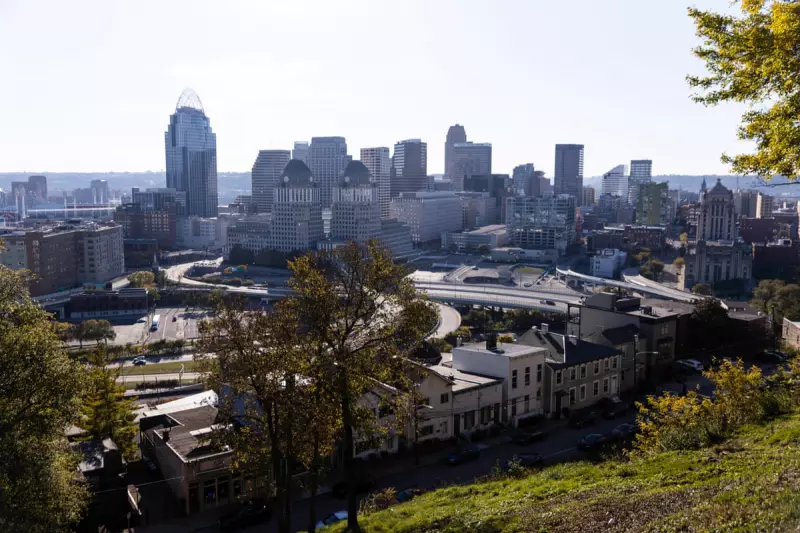
A viral video of a downtown Cincinnati brawl has become the centrepiece of a national political debate about urban crime, with Vice-President JD Vance leading claims that the Ohio city has become dangerously violent - despite official statistics showing a decrease in serious offences.
The Incident That Sparked National Attention
In July, footage emerged of a violent confrontation involving approximately 150,000 people attending events in Cincinnati's urban core. The altercation, which saw a white woman punched from behind by an African American man, quickly captured national attention when police responded within six minutes and arrested six alleged perpetrators.
Despite the swift police action, Vice-President JD Vance, who maintains a home in Cincinnati, declared that those involved should be imprisoned. His comments ignited a firestorm across social media and right-wing news outlets, with Elon Musk amplifying a clip from Libs of TikTok that garnered 4.8 million views on X.
The incident became fodder for national political figures, with former Republican presidential candidate Vivek Ramaswamy holding a town hall to discuss public safety, and the assaulted woman appearing on Fox News' The Ingraham Angle.
Crime Statistics Versus Political Rhetoric
While the national narrative suggests escalating violence, Cincinnati's crime data tells a different story. Official figures reveal that violent crime decreased from 283 incidents in the first nine months of last year to 253 during the same period this year.
Ryan James, a newly elected member of Cincinnati's city council and the youngest African American man ever to hold that position, told reporters: "We need to continue to invest in public safety, but there has been a false inflation of the perception of unsafety in Cincinnati."
James emphasised the economic consequences of such perceptions, noting that "the impacts on our communities from negative stigmas around safety is really damaging. There's an economic impact of families being afraid to come downtown."
Local Business Impact and Community Division
The national spotlight has created visible divisions within Cincinnati, with some residents believing safety has deteriorated while others see the city as a victim of national political manoeuvring.
One long-term Main Street business owner, who asked not to be fully identified to avoid deterring customers, reported witnessing increased criminal activity. "We had a customer get mugged right here on Seventh Street, I think in August. We had an employee who got hit on the back of their head. That's never happened [in the past]," they said.
However, other business owners offered contrasting perspectives. Mak Alemaye, who has operated a convenience store near Fountain Square for 15 years, noted significant improvements in recent years. "You see these windows - until about three years ago, I'd get a call from the police every two or three weeks, telling me they had been kicked in. I had to get them replaced six times. But for the last three years, it's been good."
The city's annual Oktoberfest event reportedly experienced substantially lower attendance this September, which some attribute to crime concerns, though James noted his business hasn't seen customer numbers decline.
Political Fallout and Racial Dimensions
The brawl's aftermath took on racial and political dimensions, particularly given that two injured individuals were white while seven people charged were Black. This dynamic has generated anger within Cincinnati's Black communities and raised questions about political motivations.
Council member James observed: "I think there is a lot of political motivation to disparage Democrats and the Democratic leadership in this city."
The crime narrative became central to the mayoral campaign of Vance's half-brother, Cory Bowman, though his challenge against incumbent Mayor Aftab Pureval proved unsuccessful, with Bowman securing only 21.8% of the vote in the 4 November election.
Despite the political rhetoric, Cincinnati maintains more police officers than comparable cities like Pittsburgh and nearly twice as many as Santa Ana, California.
Broader National Context
The Cincinnati situation reflects wider national patterns where right-wing figures have portrayed Democratic-led cities as hotbeds of violence, despite overall decreases in urban crime across the United States.
This narrative has persisted even as the Trump administration deployed National Guard troops to several major cities, amplifying resident fears despite statistical evidence contradicting claims of escalating violence.
The political pressure has had tangible consequences for local leadership, with Cincinnati Police Chief Teresa Theetge placed on paid leave pending an investigation into her leadership, costing taxpayers tens of thousands of dollars while supporters display yard signs backing her.
In recent city council elections, which are officially nonpartisan, all nine available seats were won by Democrat-leaning candidates, suggesting that crime concerns didn't translate into political change that some anticipated.
As business owner Alemaye summarised: "When the economy is bad, there's always break-ins, like any other city. Things happen anywhere - why is Cincinnati special?"





